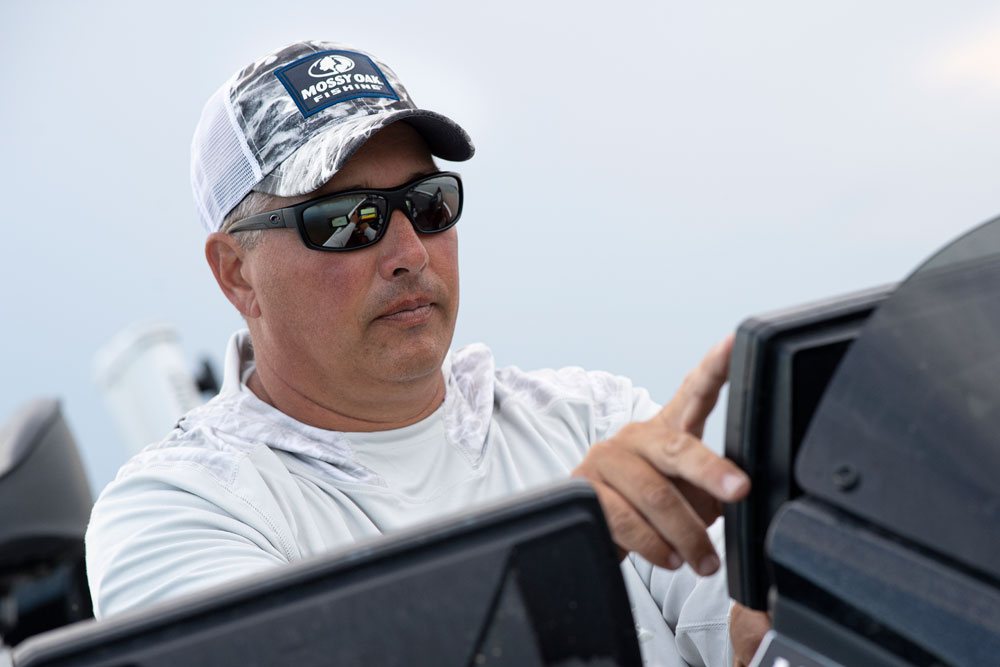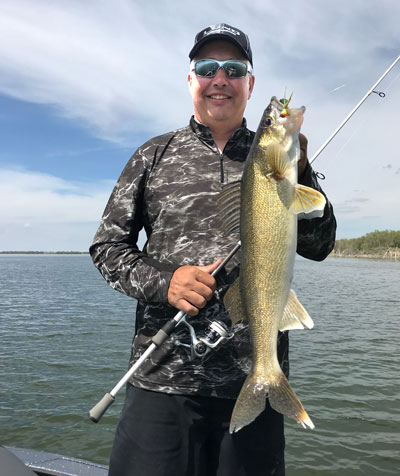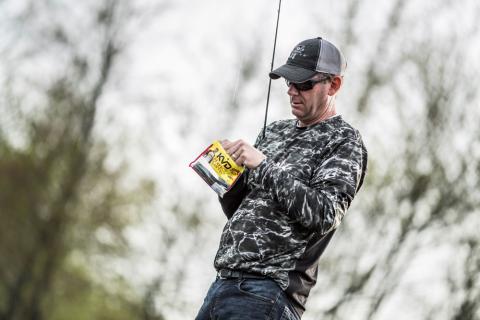provided by John E. Phillips
Mossy Oak Pro Johnnie Candle, from Devils Lake, North Dakota, has been a walleye tournament fisherman since 1994. He won the 2010 World Walleye Championship and in a normal year, would fish 6-10 walleye tournaments held all over the country. Candle also guides on Devils Lake as a professional angler. This week he shares information with us on spring fishing for walleyes.

I usually don’t start guiding on Devils Lake until May because I don’t know when Mother Nature will clear the ice. In years past, I’ve tried to guess when the ice will melt and have been wrong a few times. Sometimes I’ll have clients call in March and April, wanting to book a trip, and they’ve had to turn around shortly after they’ve arrived because ice is still present on the lake. Therefore, I’ll generally postpone my guiding season to the middle of May. By then, the ice will have melted, and the shallow water has warmed up enough for the walleye to leave the deeper end of the lake. At that time of the year, the fish are more predictable and easier to catch, which means that I can produce bent rods and smiling faces for my customers.
 In the middle of May, when I start guiding, I usually fish in shallow water. The weather starts to warm up, and it begins to feel like the beginning of spring rather than the end of it. If you ask me today how much I depend on my electronics, well, 10 or 15 years ago, I would have said I don’t hardly depend on my electronics at all. However, improvements in fishing electronics have made huge strides in the last 10 to15 years. Now we have side-imaging, 360-degree imaging, down-imaging, GPS and the ability to create our own maps. So, today I depend heavily on my Humminbird electronics. Sometimes in years past, I’ve gone to a spot where I’ve expected to catch walleyes, and the fish haven’t been there. Today, when I leave the dock, I turn my electronics on and either look for fish or clouds of bait fish. Walleyes feed on bait fish, and if I find the bait or see the fish, then I know where and at what time to fish on the lake.
In the middle of May, when I start guiding, I usually fish in shallow water. The weather starts to warm up, and it begins to feel like the beginning of spring rather than the end of it. If you ask me today how much I depend on my electronics, well, 10 or 15 years ago, I would have said I don’t hardly depend on my electronics at all. However, improvements in fishing electronics have made huge strides in the last 10 to15 years. Now we have side-imaging, 360-degree imaging, down-imaging, GPS and the ability to create our own maps. So, today I depend heavily on my Humminbird electronics. Sometimes in years past, I’ve gone to a spot where I’ve expected to catch walleyes, and the fish haven’t been there. Today, when I leave the dock, I turn my electronics on and either look for fish or clouds of bait fish. Walleyes feed on bait fish, and if I find the bait or see the fish, then I know where and at what time to fish on the lake.
The other feature that I depend on is water temperature. In mid-May, the walleyes are looking for the warmest water they can find with a spawn coming. I may check from three to six spots where I expect the walleyes to be. After I look at these spots, I may decide to go back and fish in the first place, if it has the warmest water temperatures out of all the places I’ve checked. Another thing I do in the early season is start my guide trips later in the morning than I do in the summer months. I want to give the sun a chance to warm up the shallow water to pull in the walleyes before I take my clients out and start them fishing.
Ideally, I’m looking for water temperatures in the high 40s all the way up to 50 degrees, if I can pinpoint them. Though, if I can't find those temperatures, I’m looking for the warmest water, because I know that walleyes like to move in shallow water. In other words, if one of my sites measures 44 degrees, and the other measures 46, I’ll fish in the 46-degree water. I know a lot of people may ask if a two-degree difference in water temperature really affects where the walleyes will be. On some days in the early spring, that water temperature makes a tremendous difference. The area that has the warmest water will have more bait fish and more active feeding walleye.
To learn the kind of fish that Candle is producing and to get in touch with him, visit www.johnniecandle.com, or call 701-371-9431.




























